In the journey toward literacy, children benefit tremendously from multisensory experiences that make learning engaging and memorable. Coloring pages with letters represent a perfect marriage of artistic expression and fundamental literacy development, creating powerful learning opportunities disguised as play. These specialized coloring sheets do far more than occupy busy hands – they help children recognize letter shapes, understand the connection between symbols and sounds, and develop the fine motor skills necessary for writing. By combining the naturally appealing activity of coloring with purposeful letter exposure, these resources transform abstract alphabetic concepts into concrete, enjoyable experiences. Whether used in classrooms, homeschool settings, or during recreational time, letter coloring pages offer a versatile, accessible approach to building essential literacy foundations.
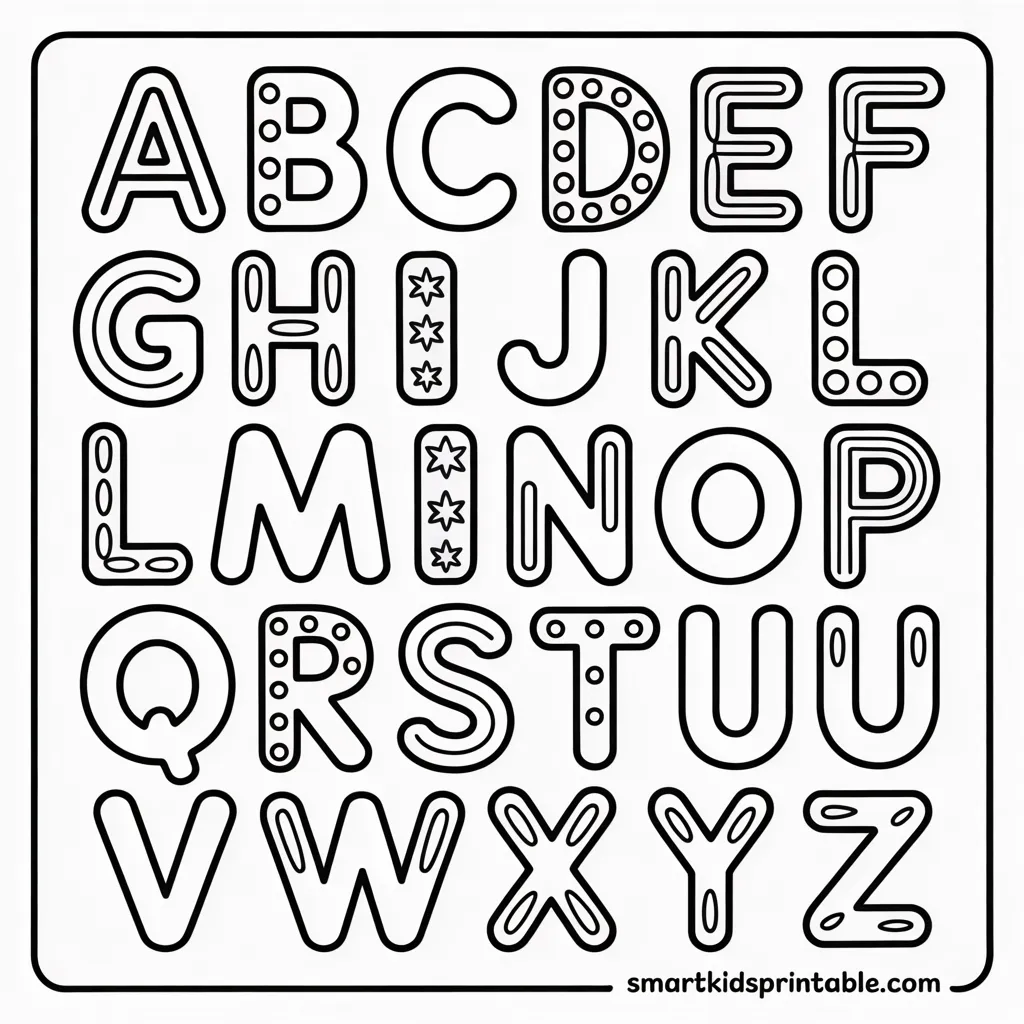
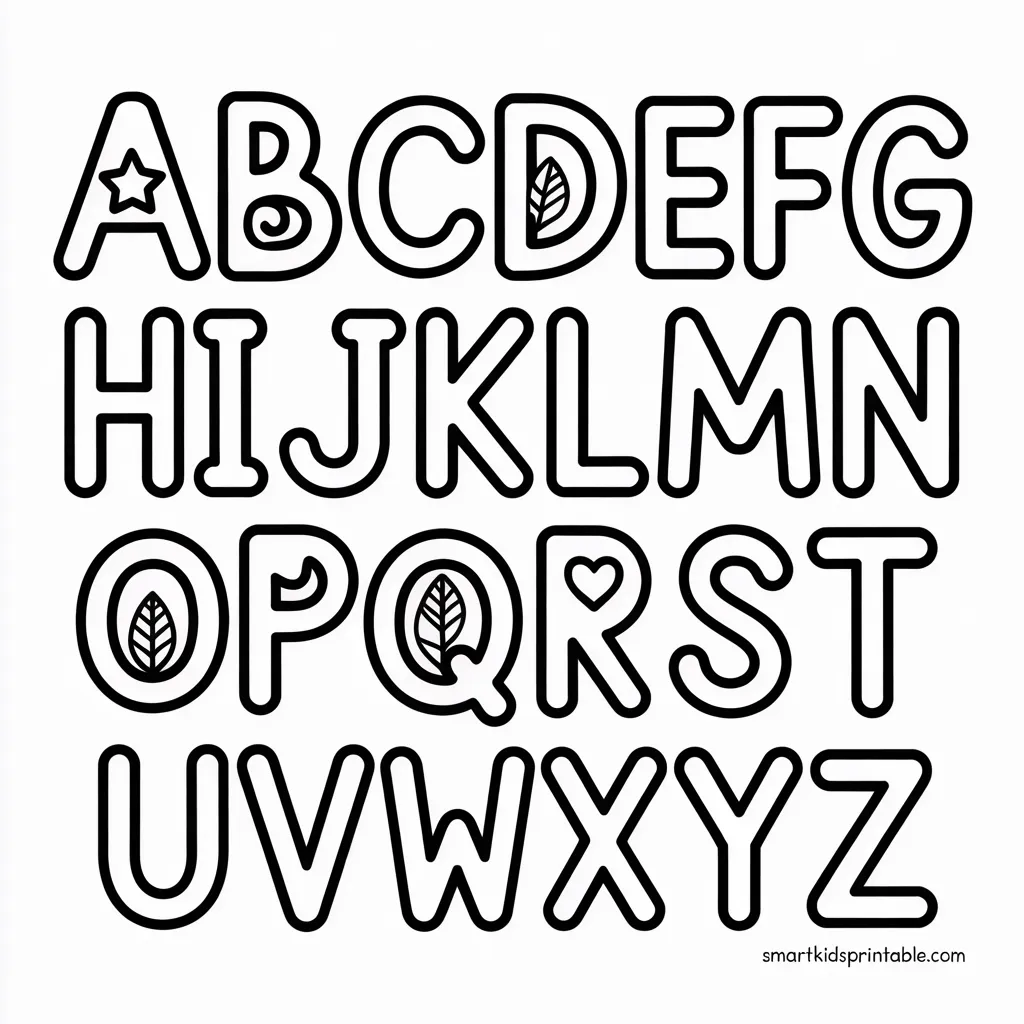
Educational Benefits of Coloring Pages With Letters
The seemingly simple activity of coloring letters delivers surprising developmental advantages across multiple learning domains.
Literacy Skill Development Through Letter Coloring
When children interact with letter coloring pages, they gain critical pre-reading skills:
- Letter Recognition: Repeatedly coloring individual letters helps children internalize their unique shapes and distinctions.
- Phonological Awareness: When combined with sound discussions, coloring letters reinforces the crucial letter-sound relationships.
- Alphabet Sequencing: Coloring pages featuring alphabetical order build understanding of letter progression.
- Print Awareness: Through coloring activities, children naturally absorb how print works in our language system.
- Sight Word Foundations: Letter coloring naturally progresses to simple word coloring, building early reading vocabulary.
Motor Skill Enhancement With Letter Coloring Pages
Beyond literacy benefits, coloring letters supports physical development necessary for writing:
- Fine Motor Control: Coloring within letter boundaries strengthens the small hand muscles needed for penmanship.
- Hand-Eye Coordination: Following letter shapes with coloring tools builds crucial coordination for writing.
- Proper Grip Development: Regular coloring naturally encourages the tripod grip used in handwriting.
- Writing Preparation: Tracing and coloring letters creates muscle memory that transfers to letter formation.
- Visual Discrimination: Distinguishing between similar letters (like ‘b’ and ‘d’) builds visual processing skills.
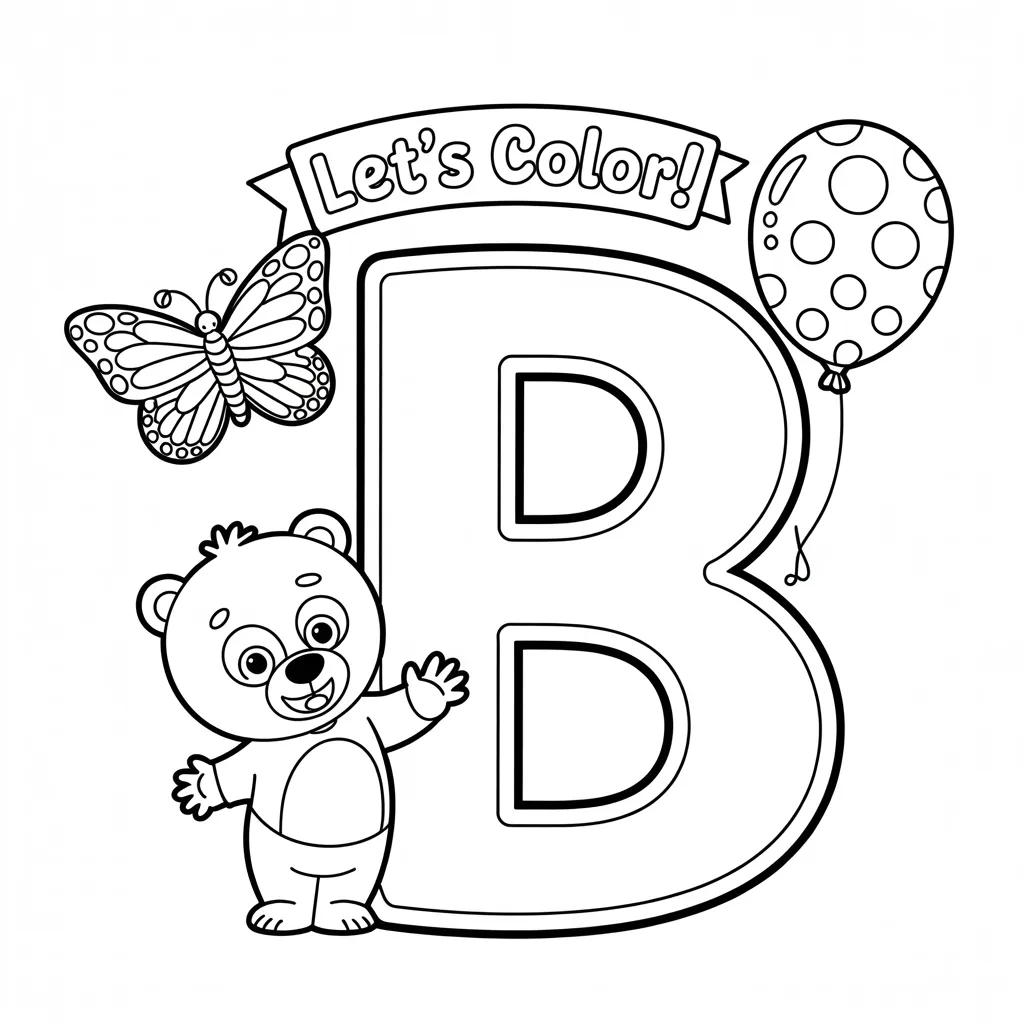
Types of Coloring Pages With Letters for Different Learning Stages
Different letter coloring formats support various developmental stages and learning objectives.
Introductory Letter Coloring Resources for Beginners
Children just beginning letter exploration benefit from these simpler approaches:
- Single Letter Focus Pages: Large, bold outlines of individual letters with simple illustrations of objects beginning with that letter sound.
- Uppercase Letter Emphasis: Beginning learners often find capital letters easier to distinguish and reproduce.
- Sensory-Enhanced Letters: Coloring pages with textured boundaries or tactile elements for multisensory learning.
- Alphabet Coloring Books: Progressive resources that introduce one letter per page with consistent formatting.
- Thematic Letter Collections: Grouping letters by similar formation patterns (circles, straight lines, combinations).
Advanced Coloring Pages With Letters for Developing Readers
As skills progress, these more sophisticated resources provide appropriate challenges:
- Lowercase and Uppercase Pairs: Pages that connect capital and lowercase forms of the same letter.
- Word-Building Letter Pages: Letters presented in simple word contexts for early reading connections.
- Themed Letter Collections: Topical groupings (animal alphabet, food alphabet) that reinforce vocabulary alongside letter recognition.
- Mixed-Case Letter Activities: Pages requiring discrimination between uppercase and lowercase forms.
- Letter Pattern Recognition: Resources highlighting letter families with similar characteristics (tall letters, descending letters).
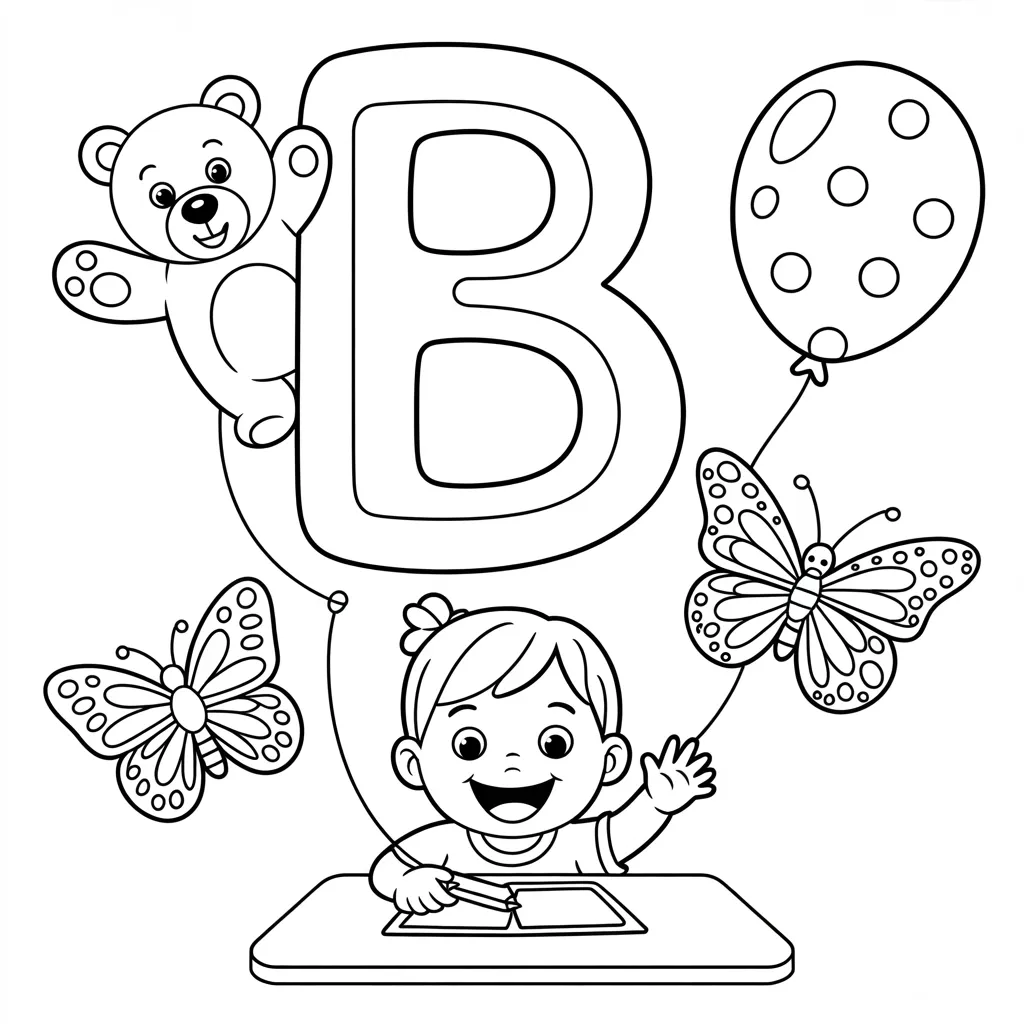
Creative Approaches to Coloring Pages With Letters
Innovative formats make letter learning even more engaging and effective.
Interactive Letter Coloring Activities
These dynamic resources extend beyond passive coloring:
- Color-By-Letter Pages: Images where specific letters correspond to particular colors, reinforcing letter recognition.
- Letter Maze Coloring: Following letter-shaped paths through mazes while coloring.
- Hidden Letter Activities: Finding and coloring camouflaged letters within larger pictures.
- Letter Construction Pages: Coloring and assembling letter pieces to form complete alphabetic characters.
- Progressive Reveal Letters: Coloring sections to gradually uncover hidden letters or words.
Multisensory Coloring Pages With Letters
These resources engage multiple learning pathways simultaneously:
- Textured Letter Templates: Coloring pages with raised boundaries or textured filling spaces.
- Scented Marker Letter Activities: Pairing specific scents with particular letters for memory association.
- Sound-Integrated Coloring: Pages connected to audio resources that pronounce letters and sounds.
- Movement-Based Letter Coloring: Resources that incorporate physical actions alongside coloring.
- Musical Letter Activities: Coloring pages connected to alphabet songs or rhythmic patterns.
Thematic Coloring Pages With Letters for Diverse Interests
Subject-specific letter coloring resources connect to children’s individual passions.
Nature and Science Letter Coloring Collections
These resources blend literacy with scientific exploration:
- Animal Alphabet Pages: Each letter paired with corresponding animals (A for antelope, B for bear).
- Botanical Letter Collection: Plant and flower themed alphabet coloring pages.
- Dinosaur Letter Series: Prehistoric creature associations for each alphabetic character.
- Weather and Season Letters: Climate and seasonal elements paired with alphabet characters.
- Space Exploration Alphabet: Cosmic objects and concepts for letter association (M for moon, S for stars).
Character and Story-Based Letter Coloring Resources
Familiar characters increase engagement with letter learning:
- Fairy Tale Alphabet: Letters connected to beloved fairy tale elements.
- Superhero Letter Collection: Action-oriented alphabet pages with superhero themes.
- Favorite Book Character Letters: Alphabetic resources featuring characters from beloved children’s literature.
- Movie and TV-Inspired Alphabet: Letter pages connected to age-appropriate media favorites.
- Cultural Heritage Letter Series: Alphabet pages representing diverse cultural traditions and stories.
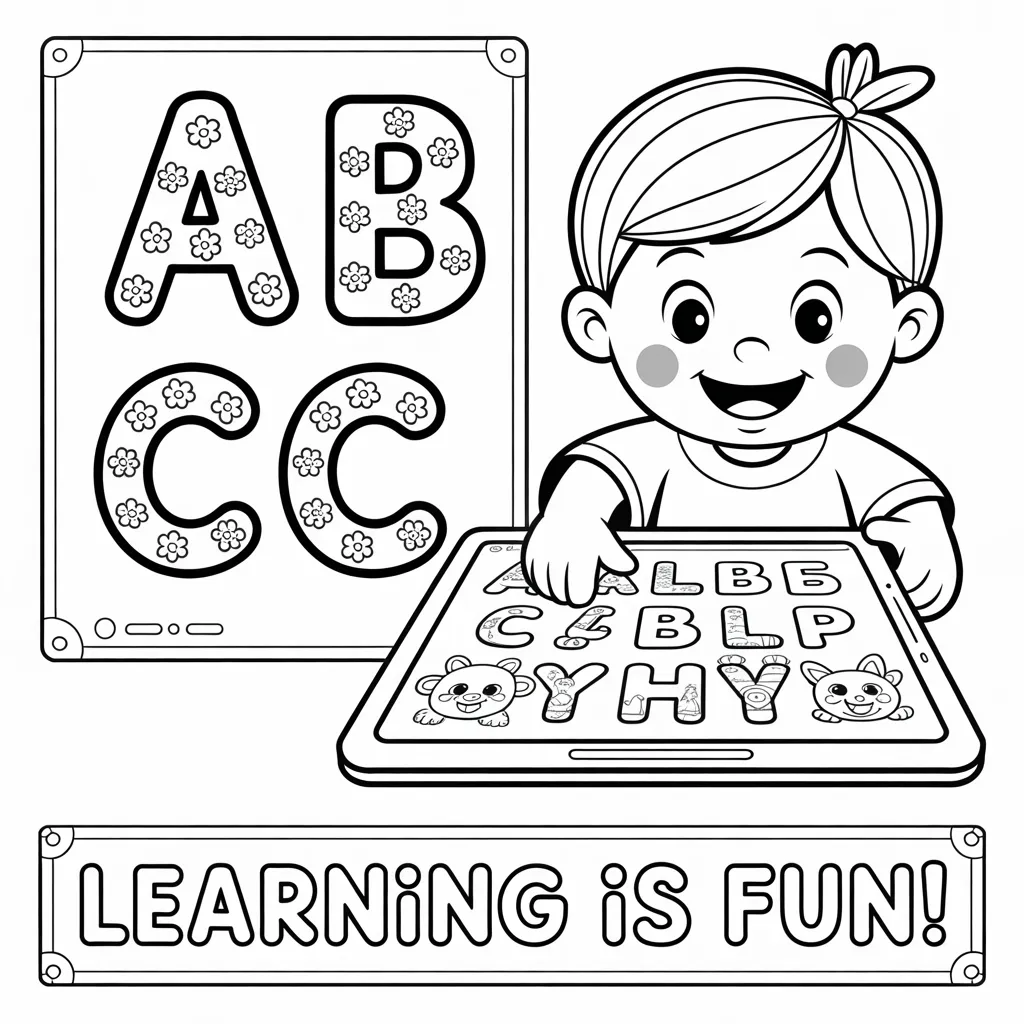
How to Effectively Use Coloring Pages With Letters
Strategic implementation maximizes the educational impact of letter coloring activities.
Guided Instruction Techniques
These approaches enhance the learning value of coloring sessions:
- Letter Sound Emphasis: While coloring, consistently reinforce the letter’s sound, not just its name.
- Formation Vocabulary: Use directional language (down, across, curve) to describe how letters are formed.
- Real-World Connections: Discuss everyday objects that begin with each letter being colored.
- Question Integration: Ask open-ended questions during coloring: « What other words start with this letter? »
- Progress Tracking: Create alphabet books with completed letter coloring pages to visualize learning.
Independent Exploration Strategies
These approaches support self-directed letter coloring:
- Letter Coloring Stations: Dedicated spaces with various letter coloring resources for independent use.
- Progressive Challenge Systems: Organized letter coloring activities that gradually increase in difficulty.
- Self-Checking Resources: Letter coloring pages with built-in verification features.
- Choice-Based Selection: Allowing children to select letter coloring activities based on interest.
- Peer Collaboration Opportunities: Partner activities where children work together on letter coloring projects.
Digital Coloring Pages With Letters
Technology offers additional dimensions to letter coloring experiences.
Benefits of Digital Letter Coloring Resources
Electronic formats provide unique advantages:
- Immediate Feedback: Digital platforms often provide instant response to correct letter identification.
- Audio Integration: Electronic resources can pronounce letters and corresponding words.
- Adaptive Difficulty: Digital coloring can adjust complexity based on user performance.
- Progress Tracking: Many apps monitor letter mastery and suggest appropriate next activities.
- Engagement Features: Animation and interactive elements maintain interest in letter exploration.
Quality Digital Letter Coloring Platforms
These reputable resources offer valuable digital letter coloring experiences:
- Educational Organization Apps: Resources developed by literacy specialists and educational institutions.
- School-Endorsed Platforms: Digital tools evaluated and recommended by educational professionals.
- Adaptive Learning Systems: Programs that adjust letter activities based on individual progress.
- Low-Distraction Interfaces: Digital resources that focus on learning without excessive entertainment elements.
- Printable Digital Libraries: Collections offering both screen-based and printable letter coloring options.
Conclusion
Coloring pages with letters represent a powerful tool in early literacy development, bridging the gap between playful exploration and formal letter learning. By engaging multiple senses, connecting to children’s interests, and providing appropriate challenges at each developmental stage, these versatile resources make the abstract world of letters concrete and accessible. When implemented with intentionality, letter coloring activities help build the foundational skills that lead to reading fluency and writing proficiency. Whether in traditional printed form or through digital platforms, these resources deserve a place in every early literacy toolkit. By embracing the natural appeal of coloring and harnessing it for letter learning, parents and educators can make the journey to literacy both effective and enjoyable.
Seasonal Coloring Printables: 40 Must-Have Resources for Year-Round Creativity
FAQ About Coloring Pages With Letters
At what age should children start using letter coloring pages?
Most children benefit from informal exposure to letter coloring pages around age 2-3, when they begin showing interest in drawing and coloring. During this early phase, focus on exploration rather than mastery – let toddlers scribble on letter shapes while casually mentioning letter names. Around ages 3-4, introduce more structured letter coloring activities that emphasize letter recognition. By ages 4-5, most children are ready for coloring pages that connect letters with sounds and simple words. However, developmental readiness varies significantly between children, so follow your child’s interest and abilities rather than rigid age guidelines. The key is keeping experiences positive and pressure-free, regardless of when you begin.
How can I help a child who shows little interest in letter coloring activities?
Rather than forcing letter coloring, try these engagement strategies: First, connect letters to the child’s specific interests by finding or creating coloring pages featuring favorite characters, animals, or activities alongside letters. Consider alternative coloring tools like dot markers, finger paints, or textured crayons that might better suit the child’s sensory preferences. Incorporate movement by having children form letter shapes with their bodies before coloring, or try large-format floor letters that children can color while standing or moving around. Make it social by coloring letters together and discussing them conversationally. Most importantly, keep sessions brief and positive, ending before frustration occurs, and remember that children learn letters through many experiences beyond coloring.
How should I balance structured guidance and creative freedom with letter coloring pages?
The ideal approach combines elements of both structure and freedom. Begin with brief structured guidance – perhaps discussing the letter’s name, sound, and formation for 1-2 minutes – then allow creative exploration during the coloring process itself. Avoid correcting color choices or insisting letters be colored « correctly, » as these interventions can diminish enjoyment and ownership. Instead, ask open-ended questions about their process and choices. For children who seem overwhelmed by too many options, provide gentle structure by suggesting they start with the letter’s outline before filling in details. Remember that the primary goals are positive letter association and engagement; perfectionism about staying within lines or using « appropriate » colors undermines these objectives and can discourage continued interest in literacy activities.
Should letter coloring pages introduce uppercase or lowercase letters first?
While traditional teaching often introduced uppercase letters first due to their simpler forms and greater distinctiveness, current best practices recommend exposing children to both cases simultaneously or with only a slight emphasis on uppercase initially. Many effective letter coloring resources present the uppercase and lowercase forms side by side, helping children understand that these different symbols represent the same letter. If using single-case resources, consider creating a balance where uppercase letters might be introduced slightly earlier but lowercase forms follow quickly, especially for frequently used letters. This balanced approach better prepares children for real-world reading contexts where lowercase letters predominate but uppercase forms serve important functions at sentence beginnings and in proper nouns.
How can I use letter coloring pages to support children learning multiple languages?
For multilingual learners, letter coloring pages can build valuable cross-linguistic connections. Look for or create resources that pair letters with images representing words that start with that letter in both languages, helping children see similarities and differences between phonetic systems. Consider color-coding to differentiate between languages – perhaps using blue for English letter sounds and green for Spanish sounds. Create bilingual alphabet books using completed coloring pages with labels in both languages. Discuss how some letters may represent different sounds across languages while coloring them. For languages with non-Latin alphabets, find coloring pages that present both alphabetic systems side by side, helping children understand the parallel function of different symbol sets while appreciating the unique features of each writing system.
